
Remote Sensing
Scope & Guideline
Advancing Knowledge in Earth and Planetary Sciences
Introduction
Aims and Scopes
- Environmental Monitoring and Management:
The journal covers research related to monitoring environmental changes, such as land use, vegetation dynamics, and coastal changes, utilizing various remote sensing techniques. - Climate Change and Its Impacts:
It includes studies that assess the impacts of climate change on ecosystems, hydrology, and urban environments, often employing long-term satellite data for trend analysis. - Data Fusion and Algorithm Development:
Research on developing innovative algorithms for data fusion from multiple sources (e.g., optical, SAR, and hyperspectral imagery) is a key focus area. - Precision Agriculture and Food Security:
The journal emphasizes applications of remote sensing in agriculture, including crop monitoring, yield prediction, and precision farming techniques. - Disaster Management and Risk Assessment:
It features studies that utilize remote sensing for assessing natural disasters, monitoring hazards like landslides and floods, and evaluating ecological risks. - Technological Advancements in Remote Sensing:
The journal also highlights advancements in remote sensing technologies, including new satellite missions, sensor developments, and innovative data processing techniques.
Trending and Emerging
- Machine Learning and AI Applications:
There is a growing trend in the application of machine learning and AI techniques for various remote sensing tasks, including image classification, object detection, and predictive modeling. - Multisource Data Integration:
Research increasingly focuses on integrating data from multiple sources (e.g., UAVs, satellites, ground sensors) to enhance the accuracy and reliability of remote sensing analyses. - High-Resolution Remote Sensing:
The demand for high-resolution remote sensing data is rising, with studies emphasizing its importance for detailed environmental monitoring and urban planning. - Climate Resilience and Sustainability Studies:
Emerging research is focusing on the role of remote sensing in assessing climate resilience and sustainability, particularly in the context of urbanization and ecological restoration. - Real-Time Monitoring and Predictive Analytics:
There is an increasing interest in developing real-time monitoring systems and predictive models to address immediate environmental challenges, such as floods, droughts, and land degradation.
Declining or Waning
- Traditional Remote Sensing Techniques:
Research that relies solely on traditional remote sensing methodologies without integrating machine learning or AI approaches appears to be decreasing. - Low-Resolution Remote Sensing Studies:
There is a noticeable decline in studies focused on low-resolution remote sensing data, as higher-resolution imagery becomes more accessible and preferred. - Basic Land Cover Mapping:
Simple land cover mapping studies using basic classification techniques are waning as the field moves towards more complex analyses that incorporate advanced machine learning models. - Static Remote Sensing Applications:
Research that does not incorporate temporal dynamics or change detection is becoming less frequent, as the focus shifts towards understanding spatiotemporal changes.
Similar Journals
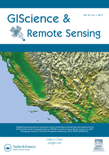
GIScience & Remote Sensing
Pioneering Insights in Earth and Planetary SciencesGIScience & Remote Sensing, published by Taylor & Francis Ltd, stands as a leading journal in the realm of Earth and Planetary Sciences, holding a prestigious Q1 ranking. Since its transition to Open Access in 2022, the journal has significantly broadened its reach, enabling researchers, professionals, and students across the globe to disseminate and access cutting-edge research related to geographic information science and remote sensing technologies. With a focus on publishing high-quality, peer-reviewed articles that contribute to the understanding of the Earth’s processes, environments, and interactions, this journal not only supports advancements in scientific knowledge but also fosters interdisciplinary collaboration. Based in the United Kingdom, GIScience & Remote Sensing continues to pave the way for innovative methodologies and applications, solidifying its vital role within the scientific community.

Boletim de Ciencias Geodesicas
Exploring New Horizons in Geodesy and Planetary StudiesBoletim de Ciências Geodésicas is an esteemed academic journal published by the Universidade Federal do Paraná within its Centro Politécnico. Focused on the dynamic field of Earth and Planetary Sciences, this Open Access journal has been a pivotal resource since 1997, fostering the dissemination of critical research and innovative methodologies. With an impact factor indicative of its relevance in the discipline, Boletim de Ciências Geodésicas ranks in the Q3 quartile for Earth and Planetary Sciences as of 2023, showcasing its commitment to quality scholarship in a competitive field. Researchers and students alike will benefit from access to cutting-edge findings, given its broad scope that encompasses various aspects of geodesy and related sciences. The journal's convergence of research from 2005 to 2024 ensures that it remains at the forefront of emerging trends and fundamental developments in the discipline, further enhancing its esteemed reputation in the academic community.
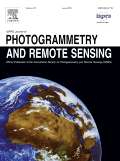
ISPRS JOURNAL OF PHOTOGRAMMETRY AND REMOTE SENSING
Fostering Excellence in Remote Sensing ScholarshipISPRS Journal of Photogrammetry and Remote Sensing is a prestigious publication at the forefront of the fields of photogrammetry and remote sensing. Established in 1989 and published by Elsevier, this journal has consistently maintained a strong academic standing, currently holding a top-tier Q1 ranking across multiple categories, including Atomic and Molecular Physics, Computer Science Applications, and Engineering. This reflects its vital contribution to advancing knowledge and technology in these dynamic fields. The journal is not only a vital resource for researchers and professionals but also serves as an essential academic platform for students keen on delving into the latest developments in geospatial sciences. The journal operates under a non-open access model, ensuring that submitted research adheres to the highest standards of scholarly communication and integrity. With an impactful focus, it brings innovative research, comprehensive reviews, and significant case studies to a global audience. The ISPRS Journal is crucial for those aiming to enhance their understanding and application of remote sensing techniques within various scientific disciplines.
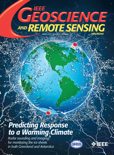
IEEE Geoscience and Remote Sensing Magazine
Connecting Professionals with Groundbreaking DiscoveriesIEEE Geoscience and Remote Sensing Magazine, published by the esteemed IEEE-Institute of Electrical and Electronics Engineers Inc, serves as a pivotal platform for cutting-edge research in the realms of geoscience, remote sensing, and related disciplines. With an ISSN of 2473-2397 and E-ISSN of 2168-6831, this prestigious magazine has established itself as a leading resource in its field, achieving a Q1 ranking across multiple categories including Computer Science, Earth and Planetary Sciences, and Electrical and Electronic Engineering. Researchers will appreciate its high impact, recognized by impressive Scopus rankings—2nd in Physics and Astronomy, 3rd in Earth Sciences, and 7th in General Computer Science, placing it firmly in the top percentiles globally. Published bimonthly and compatible with various access options, the magazine aims to disseminate innovative solutions and technological advancements, fostering collaboration and knowledge-sharing among professionals, students, and industry stakeholders. As it converges its contributions from 2013 to 2024, IEEE Geoscience and Remote Sensing Magazine continues to significantly influence the scientific community's understanding of the planet and its systems.
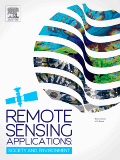
Remote Sensing Applications-Society and Environment
Empowering research that reshapes our understanding of the Earth.Remote Sensing Applications-Society and Environment, published by Elsevier, stands at the forefront of interdisciplinary research, bridging the fields of remote sensing and environmental science. With an impressive impact factor and recognition within the Q1 quartile in both Computers in Earth Sciences and Geography, Planning and Development, the journal is a vital resource for researchers, professionals, and students committed to advancing our understanding of environmental dynamics through innovative remote sensing technologies. Since its inception in 2015, this journal has cultivated a rich repository of knowledge, addressing pertinent societal and environmental issues, making it a leading source for transformative applications in the field. Accessible and relevant, articles published here not only explore theoretical advancements but also practical implications, ensuring research findings are effectively disseminated to stimulate further inquiries and applications in sustainability and ecological stewardship. The journal's strong Scopus rankings, particularly within its categories, solidify its role as an essential platform for scholarly exchange.
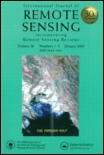
INTERNATIONAL JOURNAL OF REMOTE SENSING
Advancing Knowledge in Remote Sensing for Global ImpactInternational Journal of Remote Sensing, published by Taylor & Francis Ltd, stands at the forefront of Earth and Planetary Sciences, providing a critical platform for disseminating pioneering research since its inception in 1980. With an impressive ranking of #25 out of 195 in general Earth and Planetary Sciences and a notable 87th percentile on Scopus, this journal is recognized for its high-quality contributions that span diverse topics including satellite imagery analysis, geospatial technologies, and environmental monitoring. As a Q1 journal in its field for 2023, it offers invaluable insights and methodologies that are essential for researchers, professionals, and students alike. Although not Open Access, the journal facilitates a comprehensive understanding of remote sensing sciences, ensuring that the scholarly community remains updated with the latest advancements, trends, and applications that impact global challenges.
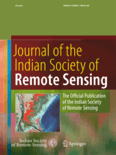
Journal of the Indian Society of Remote Sensing
Championing Excellence in Remote Sensing StudiesJournal of the Indian Society of Remote Sensing, published by SPRINGER, stands as a prominent contribution to the fields of Earth and Planetary Sciences and Geography, Planning and Development. With an ISSN of 0255-660X and an E-ISSN of 0974-3006, this esteemed journal has been in circulation since 1973, showcasing a rich repository of research and advancements in remote sensing applications, methodologies, and technologies, specifically within the Indian context and beyond. The journal's impact is underscored by its placement in the Q2 category of both Earth and Planetary Sciences and Geography as of 2023, ranking impressively in the Scopus database with significant percentiles. With the intent to bridge the gap between theory and practical application, it invites scholars, researchers, and professionals to contribute innovative studies that enhance our understanding of remote sensing and its implications in various domains. The Journal of the Indian Society of Remote Sensing is a vital resource for anyone looking to remain at the forefront of research in this dynamic field.
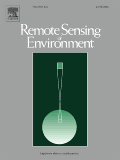
REMOTE SENSING OF ENVIRONMENT
Innovative Imaging for a Changing Planet.REMOTE SENSING OF ENVIRONMENT, published by Elsevier Science Inc, is a premier academic journal specializing in the interdisciplinary field of earth observation and remote sensing technologies. With an impressive impact factor and classified in the Q1 category for Computer Science in Earth Sciences, Geology, and Soil Science as of 2023, this journal serves as a vital resource for researchers, professionals, and students alike. The journal, which has been disseminating high-quality research since its inception in 1969, provides a platform for the exploration of innovative methodologies and applications in the assessment of environmental changes and resource management through advanced imaging techniques. While not an open-access journal, REMOTE SENSING OF ENVIRONMENT offers access options that make cutting-edge research accessible to its audience. Its strategic focus on critical issues pertaining to environmental monitoring and sustainable practices underscores its role in enhancing our understanding of the planet’s dynamics.
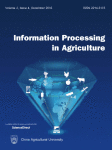
Information Processing in Agriculture
Pioneering Solutions for a Sustainable Agricultural FutureInformation Processing in Agriculture, published by Elsevier, stands at the forefront of interdisciplinary research merging agriculture with cutting-edge computational techniques. With an impressive impact factor derived from its classification within the Q1 quartile across five critical categories—including Agronomy, Animal Science, Aquatic Science, Computer Science Applications, and Forestry—this journal exemplifies excellence in scholarly communication. Open Access since 2014, Information Processing in Agriculture not only democratizes access to pioneering research but also accelerates innovation by breaking barriers for researchers, professionals, and students alike. The journal's comprehensive scope facilitates crucial dialogue on the implications of processing technologies in farming practices, contributing significantly to advancements in sustainability and efficiency within the global agricultural sector. As it converges topics from 2014 to 2024, scholars are invited to explore and contribute to a robust platform dedicated to enhancing food security and environmental stewardship.
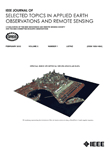
IEEE Journal of Selected Topics in Applied Earth Observations and Remote Sensing
Exploring the Frontiers of Applied Earth Observations.IEEE Journal of Selected Topics in Applied Earth Observations and Remote Sensing is a premier peer-reviewed journal published by the IEEE-INST ELECTRICAL ELECTRONICS ENGINEERS INC, focused on advancing the field of Earth observation and remote sensing technologies. With an impressive impact factor, this journal ranks in the top quartile (Q1) for both Atmospheric Science and Computers in Earth Sciences, underscoring its significance and influence in the academic community. Open access since 2020, it facilitates broader dissemination of research findings to enhance global visibility and accessibility for researchers, professionals, and students alike. Spanning the years from 2008 to 2024, the journal covers a myriad of topics that highlight innovative applications of remote sensing data and technologies in addressing environmental challenges. With a Scopus ranking placing it in the 91st and 89th percentiles, respectively, in its categories, the journal serves as a vital resource for advancing scholarly discourse and collaboration in Earth sciences.